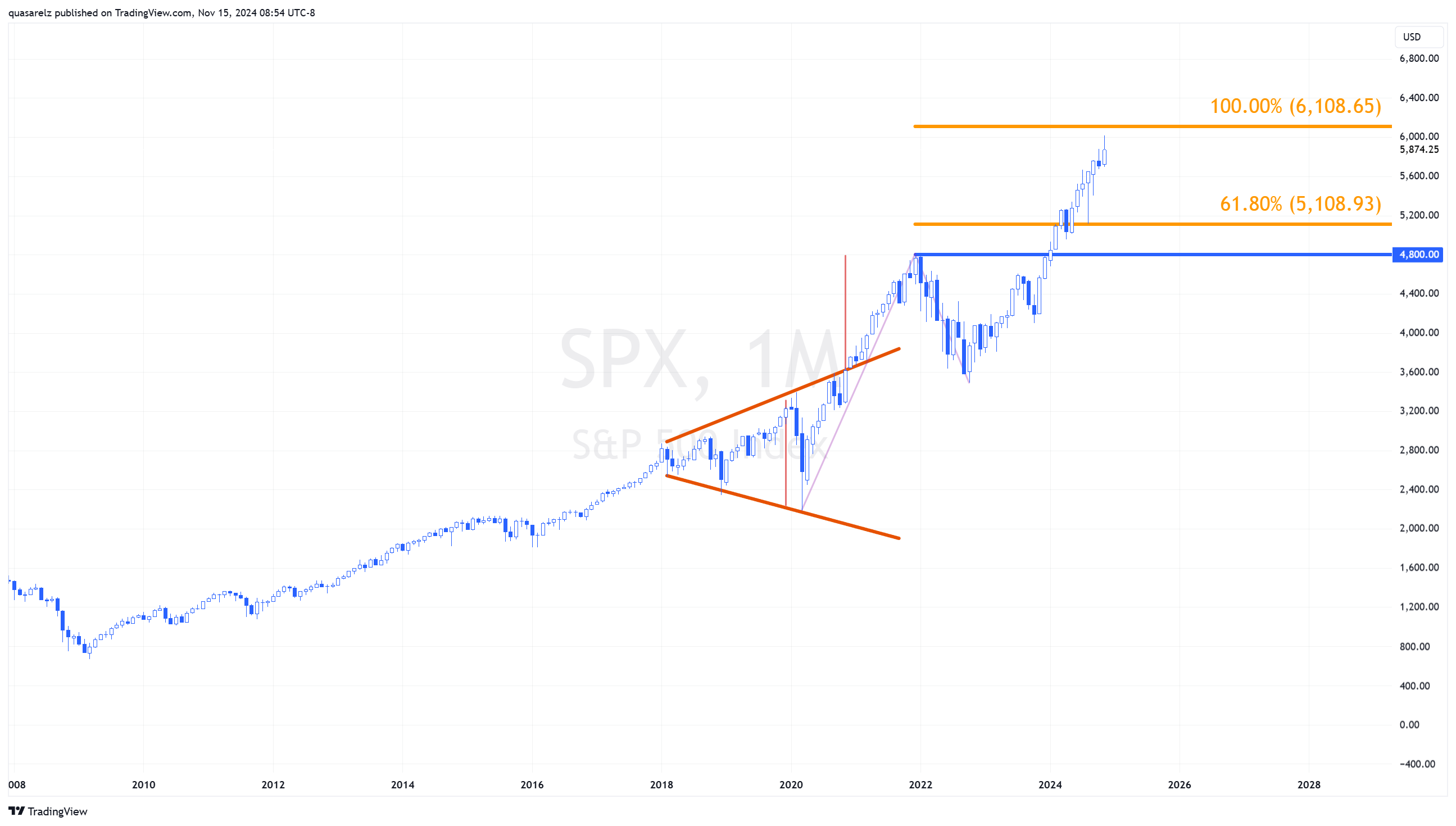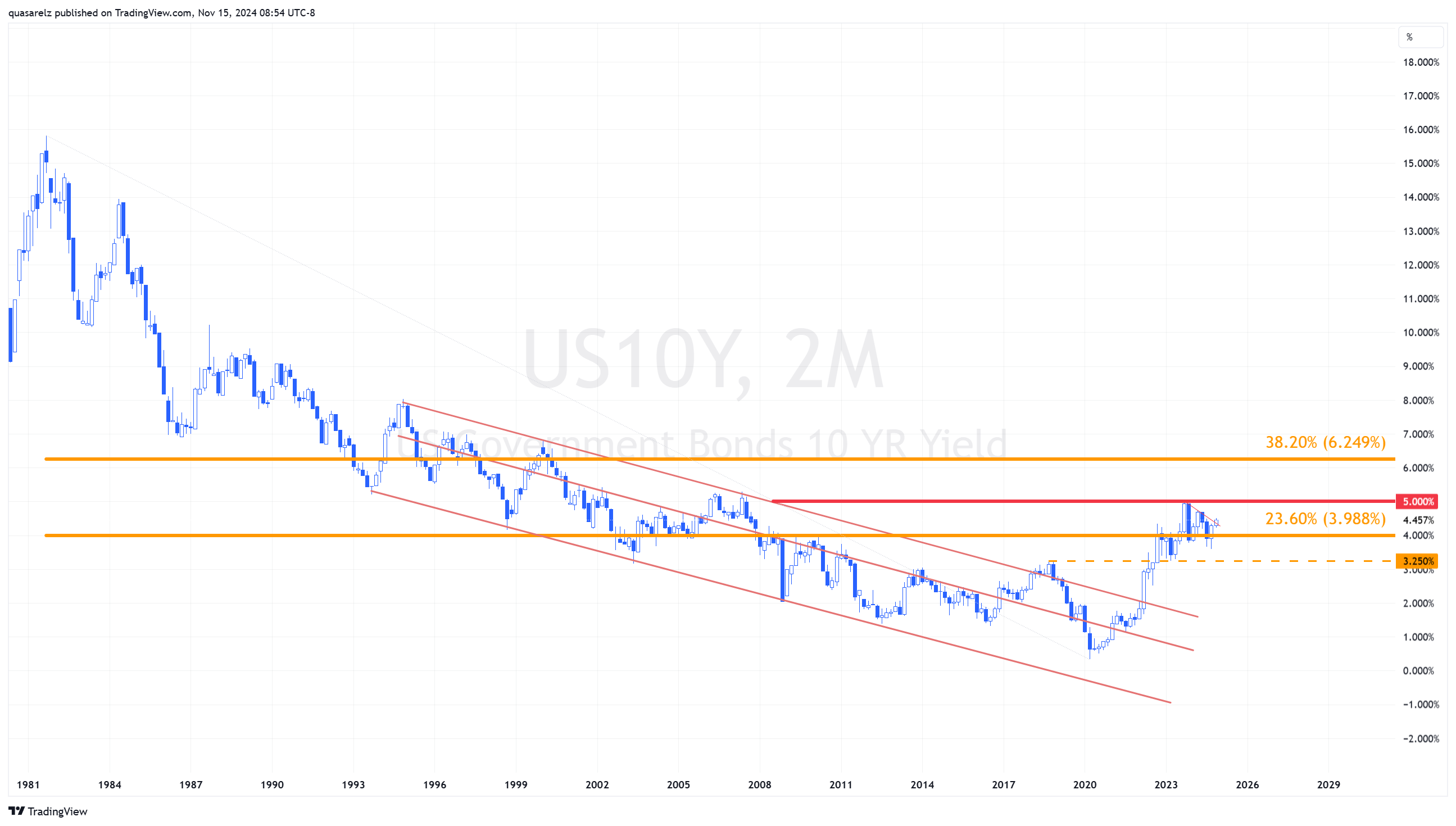The Fascinating Surge in U.S. Bond Yields

The Role of the U.S. Economy
Recently, something even more fascinating has occurred. Despite the Federal Reserve initiating a monetary normalization process in September, with an accumulated rate reduction of 75 basis points to date, bond yields have risen again since then. This has been driven by a variety of factors, including the resilience of the U.S. economy. We have seen indicators of solid growth—though not as robust as in the second quarter—supported by a U.S. consumer who continues to demonstrate strength.
Inflation and Its Persistence
In parallel, inflationary pressures have returned as a relevant topic, particularly due to inflation's reluctance to converge rapidly toward the Federal Reserve’s 2% target. This context has recently led Jerome Powell, Chairman of the Federal Reserve, to indicate that there is no rush in the normalization process.
The Impact of Trump’s Policies
The so-called "Trump Trade" and its potential effects cannot be overlooked. The reelection of Donald Trump has sparked expectations of expansionary fiscal policies that could place upward pressure on yields. On one hand, proposed deportations and tariffs could have inflationary effects, limiting the Fed’s room for further monetary policy normalization. On the other hand, expansionary fiscal policies in a context of high debt levels and fiscal deficits are likely to increase the risk premium, requiring greater compensation for bondholders.
This combination of factors has caused 10-year U.S. Treasury yields to finally break above the bearish structure they maintained since late 2023. This breakout raises two major questions: when will it impact the stock market? and what is the potential for yields moving forward?
Effects on the Stock Market
Monthly Chart: S&P 500
In the stock market, equities have remained supported mainly because the new Trump administration is perceived as pro-business, with promises of lower taxes and less regulation, which could benefit companies. However, higher borrowing costs could eventually impact valuations, as rising yields tend to discourage economic growth and increase the cost of discounting future cash flows. Nonetheless, I believe the S&P 500 could still reach 6,100 points, as the pro-business narrative might dominate in the short-to-medium term.
Technical Breakout: Toward New Psychological Levels?
Monthly Chart: US10Y
In the fixed-income market, the breakout in 10-year bond yields suggests that we may be on the path toward the psychological level of 5%. If Trump’s policies somehow derail inflationary pressures, we could even see an advance beyond 5%, with the next relevant level above 6%, around 6.2%. This scenario, of course, will largely depend on how these policies are implemented and their impact on inflation.
Conclusion
In summary, the recent rise in U.S. bond yields is shaped by a combination of economic resilience, expectations of expansionary fiscal policies, and a Federal Reserve that, for now, is “in no rush” to cut rates. This places us in a context where the cost of borrowing seems structurally set to remain higher, which will continue to capture investors' attention in the months and years ahead.
The material provided here has not been prepared in accordance with legal requirements designed to promote the independence of investment research and as such is considered to be a marketing communication. Whilst it is not subject to any prohibition on dealing ahead of the dissemination of investment research we will not seek to take any advantage before providing it to our clients.
Pepperstone doesn’t represent that the material provided here is accurate, current or complete, and therefore shouldn’t be relied upon as such. The information, whether from a third party or not, isn’t to be considered as a recommendation; or an offer to buy or sell; or the solicitation of an offer to buy or sell any security, financial product or instrument; or to participate in any particular trading strategy. It does not take into account readers’ financial situation or investment objectives. We advise any readers of this content to seek their own advice. Without the approval of Pepperstone, reproduction or redistribution of this information isn’t permitted.

